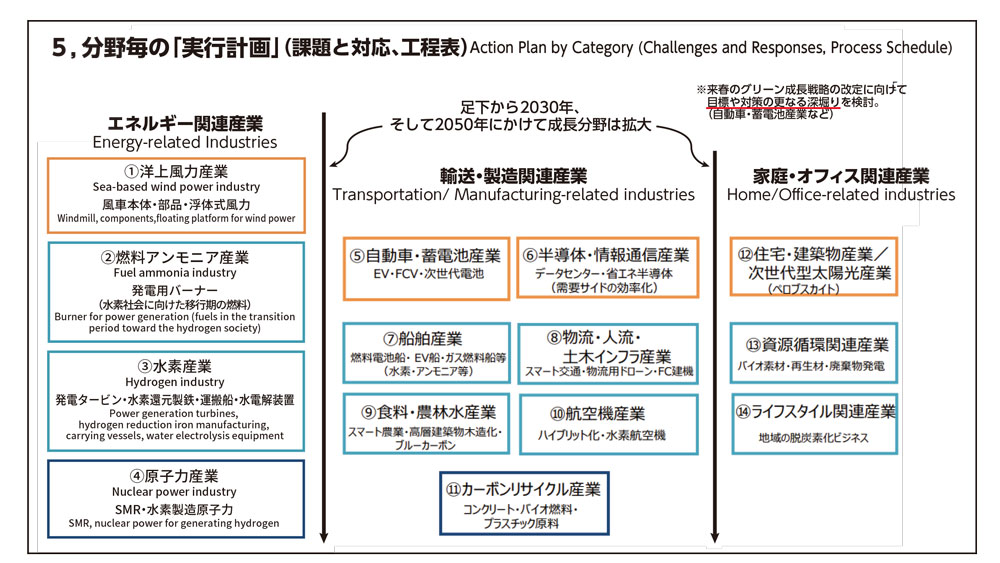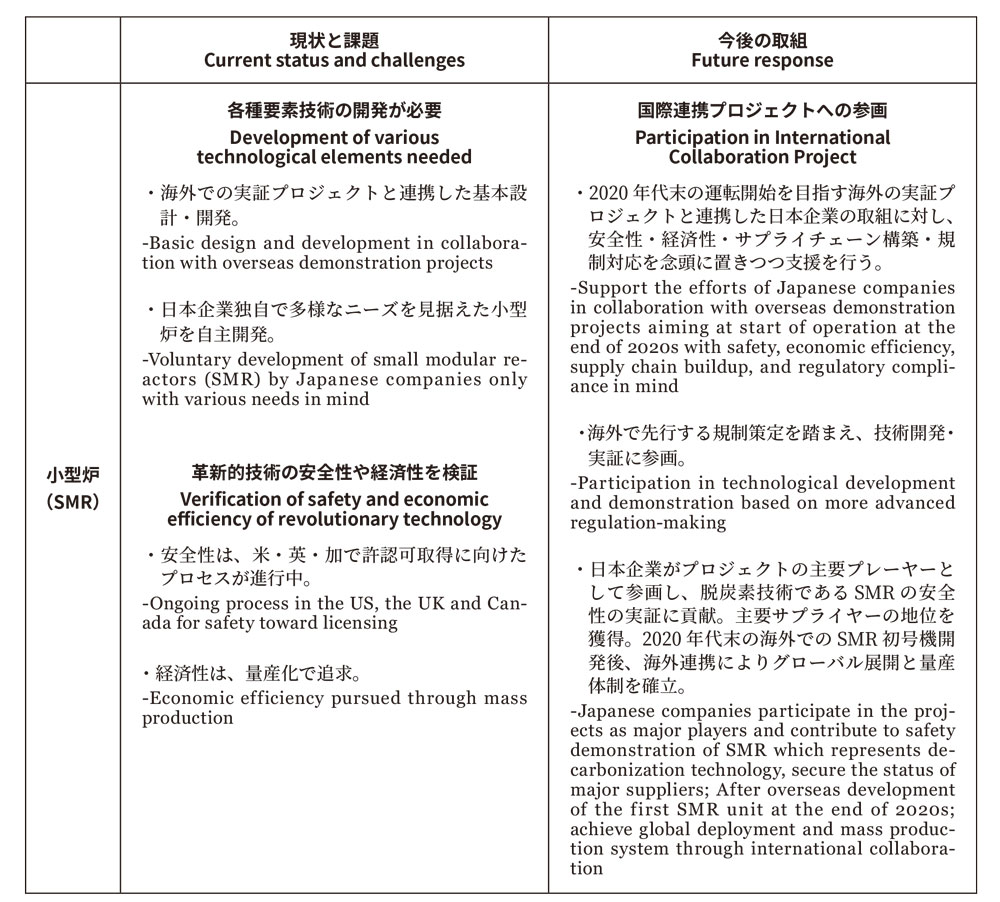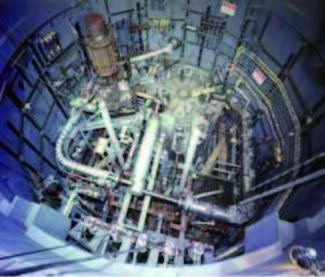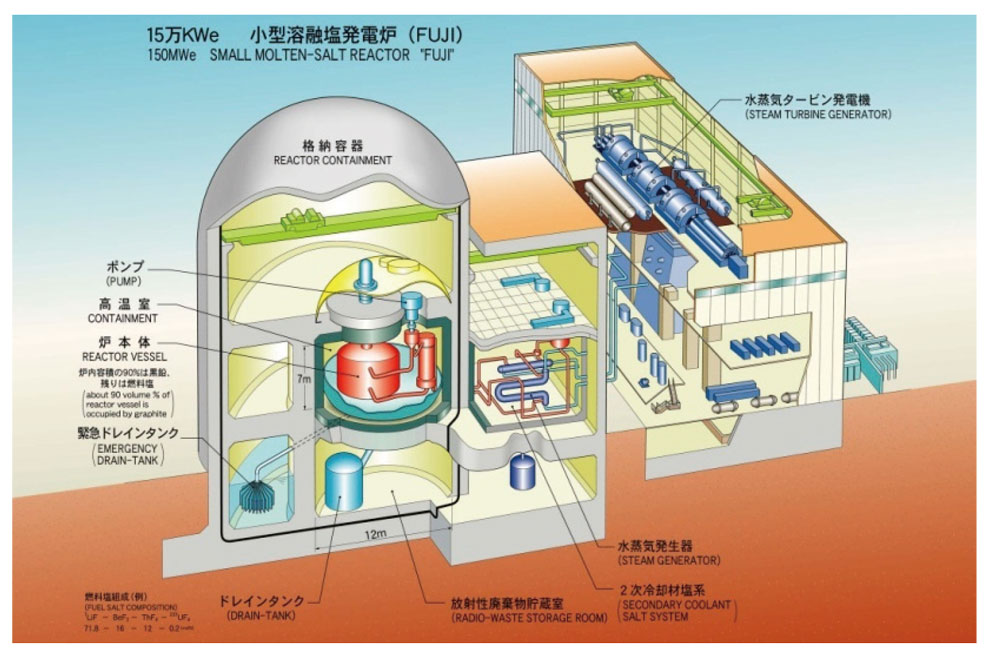Thorium Molten Salt Reactors That Open the Gate of the Second Atomic Energy Age
By Yutaka Takahashi, Thorium Tech Solution Inc.
From the Winter Issue of the electronic “Salaam Quarterly Bulletin”, No.36, February 2021
Light water reactors, which are mainstream conventional nuclear reactors, generates clean energy with low cost, but their safety has been reevaluated. This article outlines one of the low-cost small new innovative reactors that are clean, highly safe, and suitable for local generation and local consumption, namely thorium molten salt reactors that can eliminate plutonium.
Current Energy Strategy of Japan
The newly inaugurated Yoshihide Suga administration announced in the general policy speech by the Prime Minister on October 26, last year that it would achieve “carbon neutrality” with zero global warming gas emissions by 2050. He has greatly raised the previous goal of reducing the emissions amount by 80% or more from 1990 level, signaling his willingness to tackle the clean energy problem head-on at home and abroad.
The government reviews the basic energy plan every three years. The current Fifth Plan was decided by the Cabinet in July 2018, but it has set a goal to reduce the ratio of fossil fuels in the power source composition from 81% as of FY 2017 to 56% in FY 2030 through the abolition of low-efficiency coal power plants, etc., increase the ratio of non-fossil fuels instead, increase the ratio of renewable energy from 16% to 22-24%, and increase the ratio of nuclear power, which had to be stopped one after another due to the Fukushima nuclear power plant No. 1 accident, etc., from 3% to 20-22%.

From Agency for Natural Resources and Energy “Trends after the formulation of the basic energy plan and the direction of future measures”, December 27, 2018
From Prime Minister Suga’s speech, the 6th Basic Energy Plan, which will be released this year, is expected to undergo major changes, but on December 25, last year, but the Resources and Energy Agency announced the government’s action plan “Green Growth Strategy” for 2050 with goals of decarbonization in 14 key fields in 3 sectors including energy, transportation/manufacturing, and home/office. The energy-related industries focus on the four fields of offshore wind power generation, ammonia, hydrogen, and nuclear power as key fields. The nuclear power industry includes small modular reactors (SMR), high-temperature gas reactors, and nuclear fusion. It emphasized the importance of developing next-generation nuclear power generation that was supported by highly safe and innovative technology.

From the Ministry of Economy, Trade and Industry “Green Growth Strategy for Carbon Neutrality by 2050

Excerpt of the segment of the nuclear industry small modular reactor (SMR) from the Ministry of Economy, Trade and Industry “Green Growth Strategy for Carbon Neutrality by 2050”
Lecture Meeting titled “Opening the Gate of the Second Atomic Energy Age!” Held at the First Members’ Office Building of the House of Representatives
As the government makes a major shift in energy policy, the Lecture Meeting titled “Opening the Gate of the Second Atomic Energy Age!” was held at the First Members’ Office Building of the House of Representatives on December 8, last year. President Masaaki Furukawa of Thorium Tech Solution Inc. gave a lecture on the development of “thorium molten salt reactor”.
The reason why the title referred to “Second” means that the first atomic energy age up to now is about to enter the second atomic energy age.
I have given a lengthy initial explanation to allow readers to realize that we are in the transformation period of the energy policy, I want to get into the main topic on the meaning of “Opening the Gate of the Second Atomic Energy Age” and “What is going to open the gate of the Second Atomic Energy Age”. Here, I will proceed on the assumption that many readers, including this author, are not nuclear power researchers. For those who want a detailed theoretical and technical explanation, I recommend them to read the great book “Nuclear Power Plant Safety Revolution” (Bunshun Shinsho) by the late Dr. Kazuo Furukawa, who was a nuclear power researcher and a world-famous designer of the thorium molten salt reactor “FUJI”.

First Atomic Energy Age
In 1942, Enrico Fermi of the University of Chicago in the United States succeeded in the chain reaction of nuclear fission, which is the principle of nuclear power generation, in an experimental reactor. A nuclear power plant experimental reactor was built in 1951, a nuclear power plant started operation in 1954, and as of January 1, 2020, 437 nuclear power plants are in operation worldwide ((one company) Japan Nuclear Industry Association materials). Most of them are light water reactor types that use uranium solid fuel, and many of them generate 1 million kWh. Unlike solar or wind power generation, nuclear power generation is a base load power source that stably supplies a constant amount of power at low cost regardless of the season, weather, day or night like thermal power generation, and also have an advantage of being clean energy that does not emit CO2 unlike thermal power generation. But the biggest weakness is the issue of safety. In the event of a serious accident, there is a risk of explosion, core meltdown, and diffusion of radioactive materials into the surrounding area. In addition, the location is far from the city center with a large amount of energy loss associated with long-distance power transmission, so it is necessary to reprocess spent nuclear fuel and secure a place to receive nuclear waste materials. From a security perspective, plutonium produced by burning uranium fuel can be used for the production of nuclear weapons, so the Japan-US Nuclear Cooperation Agreement requires the reduction of plutonium that has no purpose for use.
Prime Minister Suga’s response to the Diet on November 4, last year, saying, “We do not anticipate the construction of additional nuclear power plants at this time,” can be perceived as the indication that the First Atomic Energy Age, namely the era of mainstream conventional light water reactor type nuclear power generation, which has major safety problems, is beginning to be phased out. At the same time, Minister of Economy, Trade and Industry Hiroshi Kajiyama said, “We will continue to make efforts to improve safety, such as technological development including new innovative reactors,” and his statement can be perceived as the indication of the dawning of the Second Atomic Energy Age and his expression of expectations for it.
Requirements of the Second Atomic Energy Age
Then, what are the requirements for nuclear reactors in the Second Atomic Energy Age? The requirements include not losing the strength of nuclear power generation, including low cost, base load power source capable of stable supply, and no CO2 emissions, and achieving the level of safety that is hard to imagine the occurrence of a severe accident like the one that occurred at Fukushima Daiichi Nuclear Power Station. Even if the reactor is shut down, radioactive materials should not be scattered in the surrounding area. In addition, it should be small and suitable for local power generation and local consumption, and it should not require long-distance power transmission, so there should be little energy loss. Furthermore, there should be no need to reprocess spent nuclear fuel, and even if nuclear waste materials are generated the amount should be small, and they should be stored on the reactor premises and don’t need to be carried out of the premises, and plutonium for nuclear weapons that requires reduction for security should not be generated. It can be said that a nuclear reactor that meets all of these requirements can open the gate of the Second Atomic Energy Age. Is it really possible to develop such a dream-like nuclear reactor?
Thorium molten salt reactors that open the gate of the Second Atomic Energy Age
The reactor that opens the gate is the thorium molten salt reactor introduced below.
Nuclear power generation system is a device that continuously causes a nuclear fission chain reaction (criticality) and generates electricity using a steam turbine operated by the enormous heat generated with such chain reaction. There are two types of natural raw materials that can be used as materials for fission chain reactions, namely uranium and thorium. Uranium produces plutonium in the fission reaction, and thorium produces uranium but not plutonium. (Details on the fission reaction and the structure of the reactor are described in detail in “Nuclear Power Plant Safety Revolution” by Kazuo Furukawa, referred to earlier).
There are three major differences between the uranium solid fuel light water reactor that represents the First Atomic Energy Age, and the thorium molten salt reactor.


High safety and economic advantage
The characteristics of the thorium molten salt reactor are described below in comparison with the light water reactor in terms of safety and economy, which are important for power generation.
<High safety>
The safety of the thorium molten salt reactor is mainly due to the operation as liquid fuel like a chemical plant. By dissolving thorium in a molten salt (a FLiBe type molten salt of liquid fluoride), the normal pressure state is maintained even if a fission reaction occurs, and fuel rods that can cause a meltdown are unnecessary. Since water is not used for cooling, hydrogen gas is not generated. Even if the circulation pump stops, the liquid fuel continues to circulate by natural convection and carries the heat of the core to the outside, and if the circulation speed slows down, the nuclear reaction speed of the core slows down and heat generation decreases, so core overheating does not occur. In an emergency, the drain valve (exhaust port) at the bottom of the core automatically opens even when the power is turned off, and the liquid fuel falls into the underground tank, and at the same time it hardens into a glass, so the radioactive materials are trapped and do not go out. Therefore, unlike the Fukushima Daiichi Nuclear Power Station, hydrogen gas explosion, nuclear fuel meltdown, and outflow of radioactive materials to the outside do not occur.
Since it is equipped with such principle safety and passive safety (preventing accidents), it is difficult to assume a severe accident.
<Economic advantage>
The thorium molten salt reactor is estimated to cost less than 5 yen per 1kWh, and can supply electricity at a much lower price than renewable energy, thermal power, and even light water reactors (see the table below). In the first place, nuclear material used as fuel is an efficient energy resource that produces energy equivalent to 1 ton (million times) of oil from 1 gram of it. In addition, since thorium molten salt reactor uses thorium as a liquid fuel, it does not require complicated fuel rods that require regular replacement, has a simple structure, and does not require multiple layers of safety measures like a light water reactor, so the reactor can be manufactured at a low cost. In addition, since the speed of the fission reaction can be controlled by changing the flow velocity of the liquid fuel, it is compatible with renewable energy, such as compensating for the instability of renewable energy.
Furthermore, since the molten salt reactor can use not only thorium but also plutonium as fuel, the effect of two birds with one stone can be expected to create a highly profitable industry while eliminating troublesome plutonium in the molten salt reactor. In addition, while uranium is unevenly distributed and monopolized, thorium is universal and abundant all over the world, so it is cheaper and less vulnerable to competition for securing resources.
Thanks to the efforts of Dr. Wigner and Dr. Weinberg, the molten salt experimental reactor has a track record of having operated accident-free for four years from 1965 to 1969 at the Oak Ridge National Laboratory in the United States, and it is technologically established. Compared to other types of new innovative reactors, it has advantages in terms of development time and development cost.

Comparison of power generation costs
 Molten salt experimental reactor MSRE operated accident-free at the Oak Ridge National Laboratory, USA from 1965 to 1969
Molten salt experimental reactor MSRE operated accident-free at the Oak Ridge National Laboratory, USA from 1965 to 1969
Excluded from development options due to judgment of being ‘militarily worthless’
Although it is a new innovative reactor, the molten salt reactor is not a technology that has emerged in the last few years. As mentioned earlier, despite four years of accident-free operation, the development of a molten salt reactor was suddenly terminated in the United States in 1976, and development has been suspended until recently. It is said that the reason for the cancellation was due to the political judgment that the thorium molten salt reactor is ‘militarily worthless’ because it does not produce plutonium suitable for the production of nuclear weapons, reflecting the international situation at that time. Unfortunately, this has resulted in most nuclear power plants around the world becoming light water reactors that produce plutonium, which are inferior in safety and economic efficiency but have military value.

Molten salt reactor “FUJI” designed by Kazuo Furukawa, founding president of Thorium Tech Solution Inc.
The Second Atomic Energy Age has begun
However, as light water reactor type nuclear power plants in the First Atomic Energy Age is about to reach the end of its life cycle (40 years of operation in Japan, the operation can be extended only once for about 20 more years with the approval of the Atomic Energy Commission) one after another, the review of nuclear power generation is in full swing around the world. The review focuses on the development of a small modular reactor (SMR: tens of thousands of kWh in scale) by a venture company, in which the private sector takes the initiative in development that emphasizes safety and economic efficiency with support from the government, instead of the government-led development as in the past. Twenty development ventures around the world, centered on 14 in the United States, have already submitted a bid and are competing. The trend is reaching Japan, and the Ministry of Economy, Trade and Industry started the “Innovative Nuclear Technology Development Support Project to Meet Social Demand” in FY 2019, and FY 2020 is the second year. The development of a molten salt reactor by Thorium Tech Solution Inc. has also been adopted as a project for support, and the company is proceeding with the development of a plutonium-eliminating molten salt reactor peculiar to Japan and a thorium molten salt reactor with an eye on the world market.
In conclusion
While the importance of global environmental conservation such as mitigation of global warming increases, in order to meet the rapidly growing global energy demand centered on emerging countries, it is necessary to promote energy saving and supply a large amount of safe, clean and low-cost electricity. At the same time, humankind is seeking a ‘reactor for peace’ that does not produce plutonium suitable for the production of nuclear weapons. This author has great expectations and hopes for the thorium molten salt reactor as a leader in the Second Atomic Energy Age that can meet these needs.
(reference)
Homepage of Thorium Tech Solution Inc. https://ttsinc.jp/
For purchase of “Nuclear Plant Safety Revolution” (Bunshun Shinsho) http://www.gunkyo.co.jp/bookGAK.php
Digital version https://books.bunshun.jp/ud/book/num/1666080600000000000K
Molten Salt Reactor Study Group
https://www.youtube.com/channel/UC4cm0mYPDBZHqcz0t15-mwg
Thorium, Another Nuclear Power (Amazon Prime) https://www.amazon.co.jp/dp/B08DL6LBXN
“Nuclear Power Plant “, Another Choice” by Kazuo Kaneko, Goma Shobo Shinsha
“Thorium Reactor Revolution” Kazuo Furukawa,
“Departure from Hiroshima” by Takashi Nagase, Tenbsha
